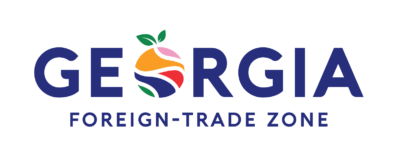Third-Party Logistics Providers Taking Advantage of the Foreign-Trade Zone Framework
For nearly eight decades, foreign-trade zones have been facilitating global trade for importers and manufacturers. Historically, duty deferral and tariff mitigation were the main attractions. However, recent changes in the electronic and regulatory environment have caught the attention of a new set of aspiring FTZ users, none more aggressive than third-party logistics providers.
Tommy L. Berry, president and chief executive of PointTrade Services defines the trend. “3PL distribution within the FTZ framework is hot and will continue to be for the next three to five years, minimum.” Berry’s firm offers turnkey services for FTZ users from initial research to planning, implementation and audit. In six instances, his firm actually administers FTZs for its clients.
Will Berry (no relation to Tommy Berry), Executive Director of the National Association of Foreign Trade Zones, confirmed the trend from his organization’s perspective. “The newest category of players are people on the logistics side of things — 3PLs, freight forwarders and Customs brokers.”
Administrative and processing advances over the last five years are fueling 3PL interest in FTZ operations. “Electronic 7512 and 214s have provided the means to handle Customs requirements and cut out delays,” Tommy Berry said. For example, FTZ efficiencies shave an average of two days off door deliveries to Midwest U.S. destinations. For other inland points, transit savings of three to four days are not uncommon. Concurrent cost savings for administration and Customs processing run $500,000 to $1 million annually for a typical zone user.
Other recent advances further increase FTZ curb appeal for 3PLs. Weekly entry permits an FTZ operator to submit a single weekly estimate of goods to exit the zone, obtain CBP advance approval to release the goods, then remove goods up to the amount of the estimate. The advantages over individual filings are apparent, substantial and measurable. In addition, direct delivery allows a manufacturer to admit critical goods and components into the FTZ evenings and weekends and file the requisite admission notification the next working day. This provides critical continuity for assembly line and just-in-time operations.
“In my experience, the payback on initial investment to establish a zone averages nine months,” said Tommy Berry. Few investments offer such speed of return, and after payback, duty and processing savings make their way directly to corporate bottom lines…ad infinitum.
Electronic filing advances are generating increasingly robust information systems among zone operators. “An FTZ environment by necessity gives you a backbone to grow your IT capability to meet Customs and customer requirements,” said Tommy Berry. “As a program, we’re going to take the lead in technologically advanced information systems. We’re basically a paperless society in a zone.”
Tommy and Will Berry both said that upper management embraces the FTZ for its superior freight and data visibility. “The implementation of the automated e214 admission process from original port of entry to the FTZ makes the zone a fully integrated, import supply-chain environment,” Berry said. In addition, no duties are ever paid for direct exports from a distribution zone.
Customs also holds FTZs in high regard. Will Berry reports that stringent operating parameters for the zones help position them favorably for the microscopic CustomsTrade Partnership Against Terrorism scrutiny of the post-Sept. 11 environment. “Zone operators must pass muster on multiple security issues up front. In addition, the extensive background checks required for key zone personnel exceed September 17, 2008 1001 Connecticut Ave., NW, Suite 350 Washington, DC 20036 202.331.1950 www.naftz.org Customs standards for transportation worker screening. The nature of FTZ operations necessitates extraordinary inventory controls for arrivingand receiving goods and components, inventory storage and management and exiting finished products. Customs is so impressed with FTZ protocols that zones have been awarded the Customs “best practices” label.
The multiple benefits inherent in FTZs continue to appeal to a wide spectrum of operators. In addition to 3PLs, manufacturers, government entities and economic developers populate the 260 zones currently in operation. While most zones remain port-proximate, for ease of transportation and Customs interface, sub-zones have proliferated. Mostly these are single-user zones dedicated to the manufacturing, assembly or distribution operations of one tenant. Oil refineries, automotive, electronics and pharmaceutical interests are leading proponents. Beyond recent advances in electronic filing and FTZ automation, traditional advantages remain magnetic. Tariff relief allows FTZ tenants to import goods and components, perform value-added processing and assembly, then enter them at finished good duty rates. Another advantage is duty deferral — products or components are not assessed applicable duties until they physically exit the zone. FTZs also offer improved freight velocity: Customs best practices designation means shipments via FTZs enjoy accelerated clearances and lower inspection frequency. Weekly entries and 24-7 withdrawal capability further shorten transits.
Lower duty rates, quicker deliveries and lower compliance costs, reduced staff overhead. This combination of efficiencies in the FTZ environment is catalyzing a surprising trend — onshoring. Savings in hard cash and improved opportunity costs have made it more economical for many industries to consolidate raw materials and components for manufacture on U.S. soil. “Zone economics can make it cheaper to manufacture here. Companies that have previously gone overseas in pursuit of low cost labor have brought their manufacturing back,” Berry said.
Domestic manufacturing carries an important collateral benefit. Companies operating in a U.S.-located foreign-trade zone find they are better able to control and protect their intellectual property. Improved oversight and physical security dramatically reduce the twin threats of theft and reverse engineering.
By any measure, interest and use of foreigntrade zones is skyrocketing. In 2004, goods processed through U.S. FTZs were valued at $305 billion. In 2005, the last year for which numbers are available, the figure jumped to $410 billion. All the players predict that this huge 34 percent increase is the harbinger of a new “golden age” for FTZs. Projections are that volumes will double over the next four to five years.

